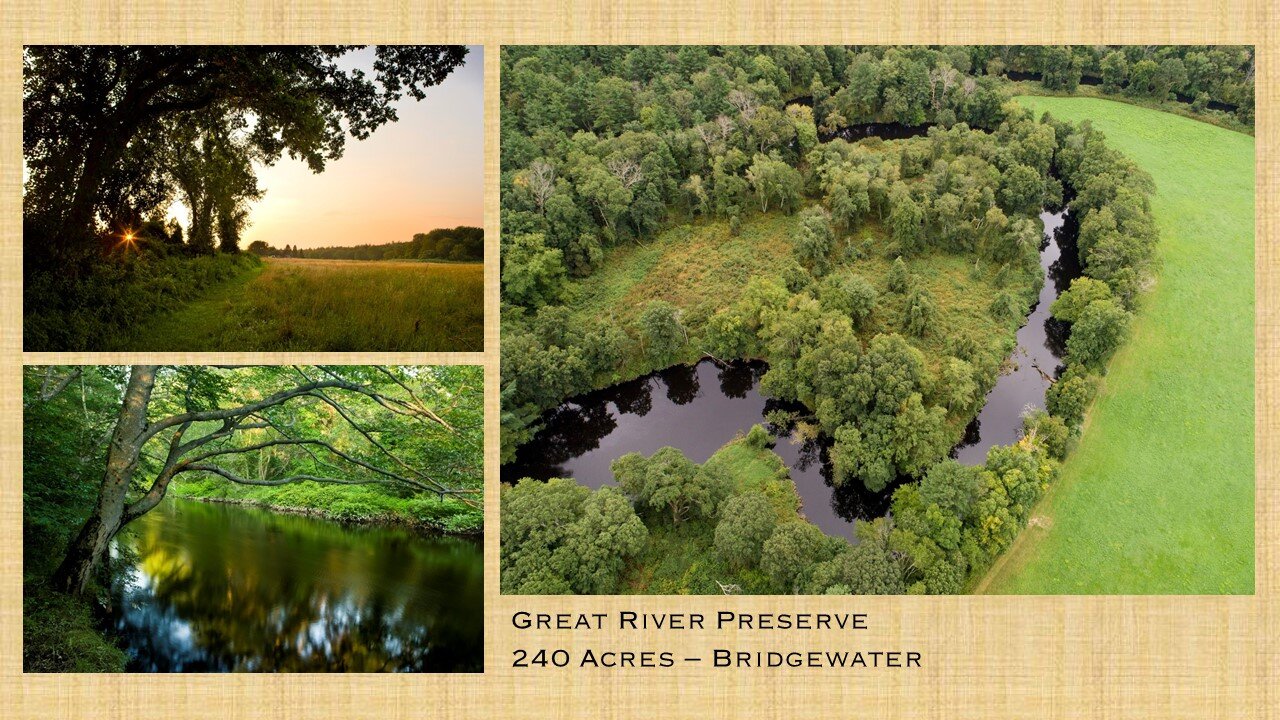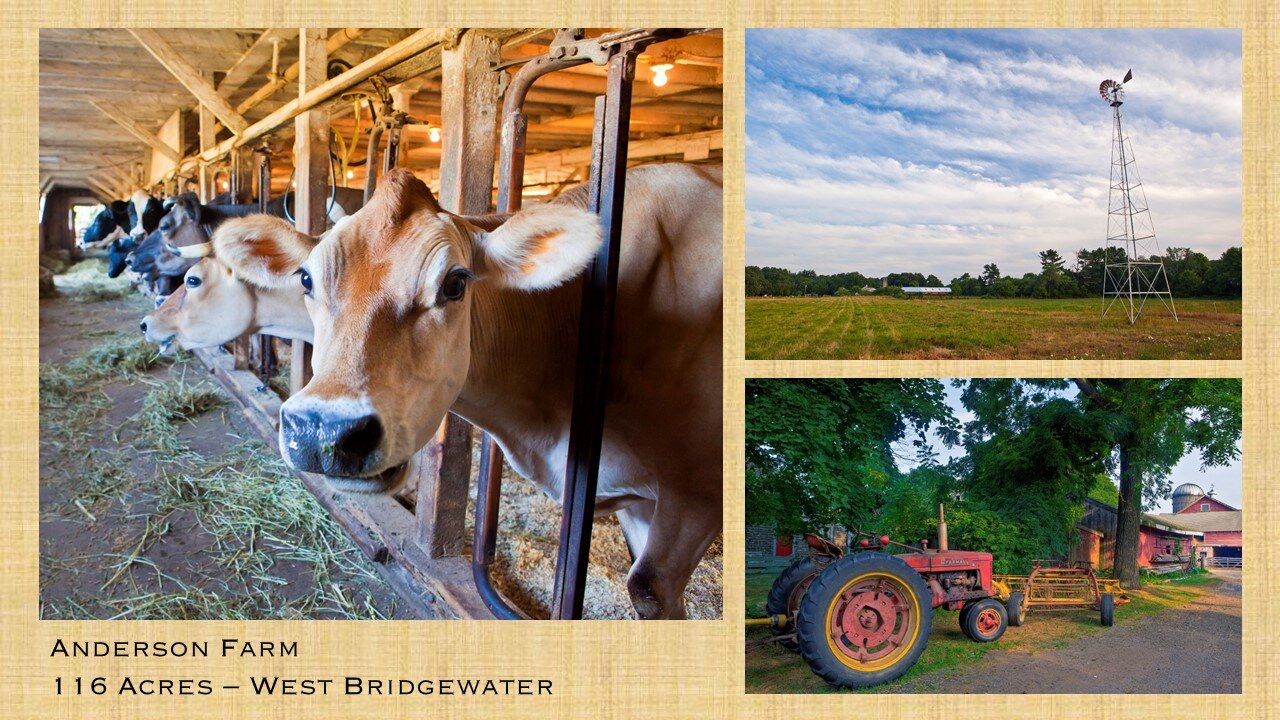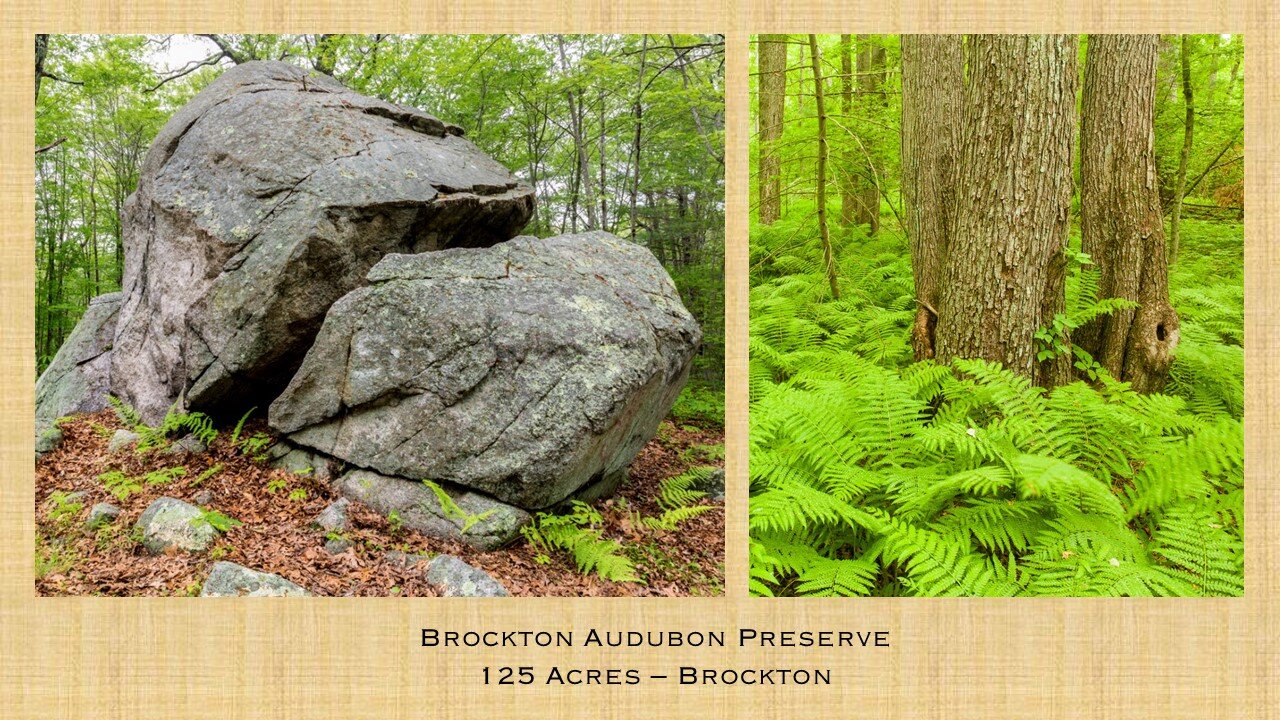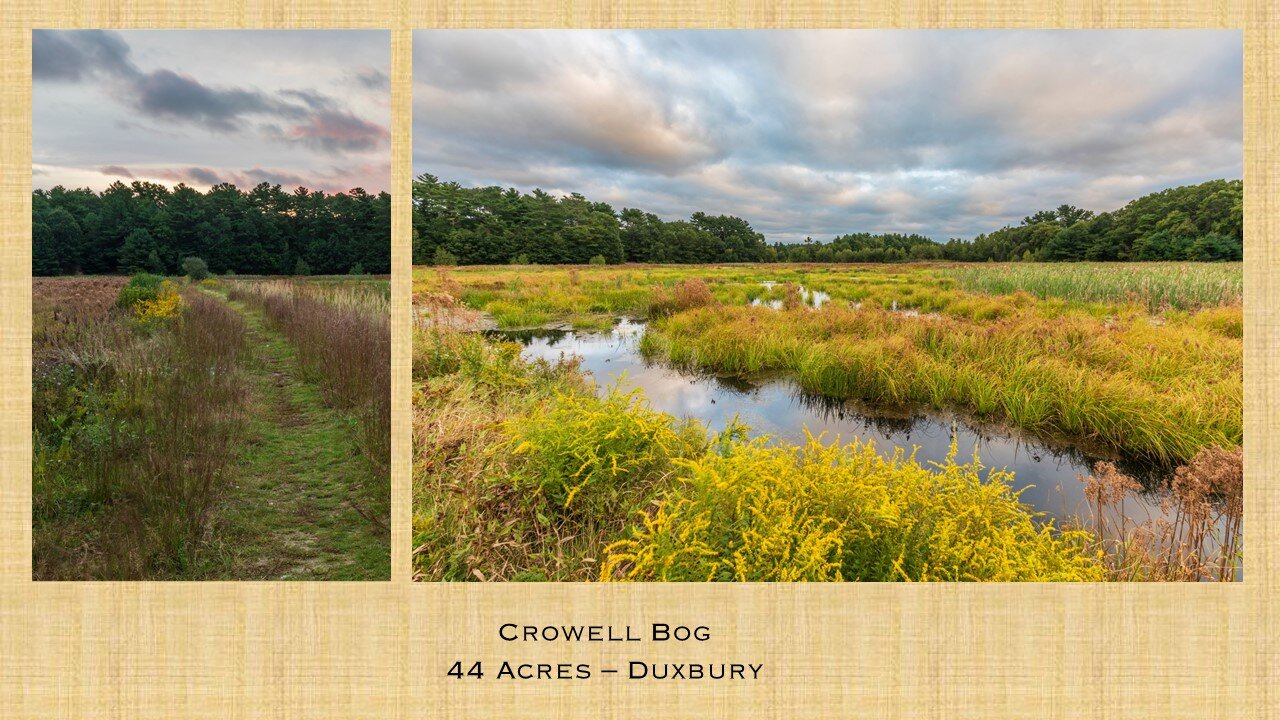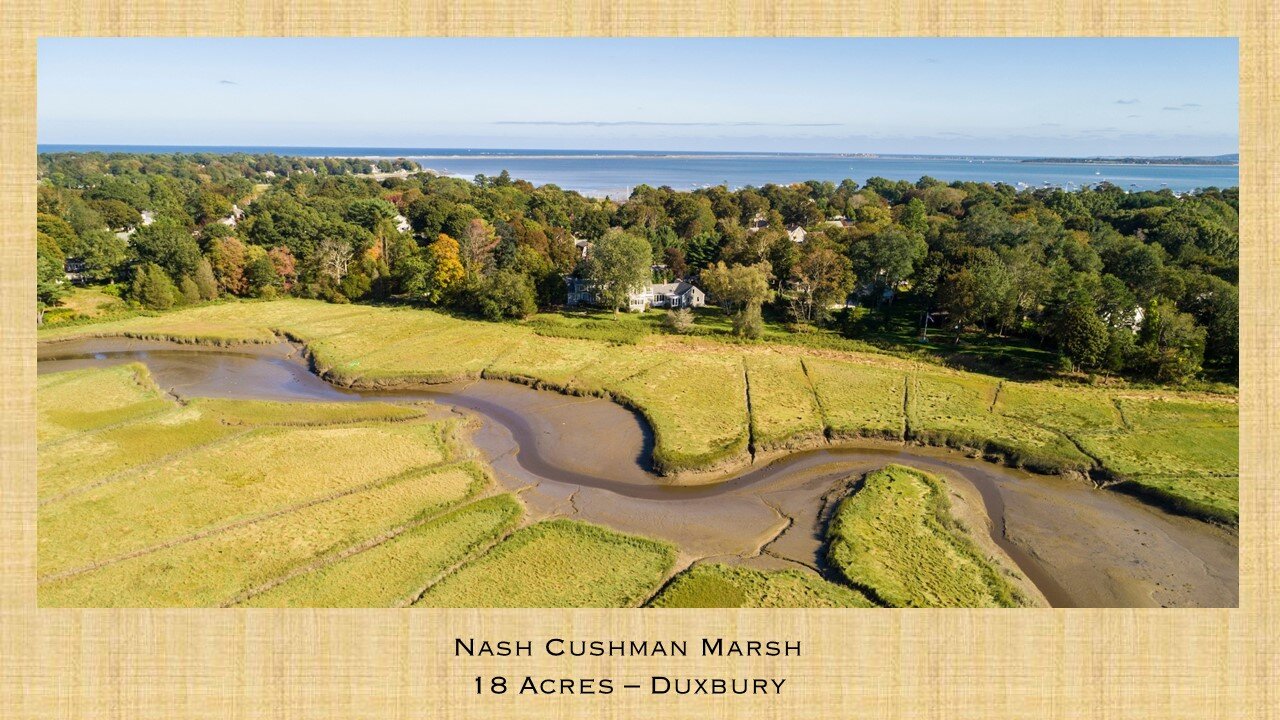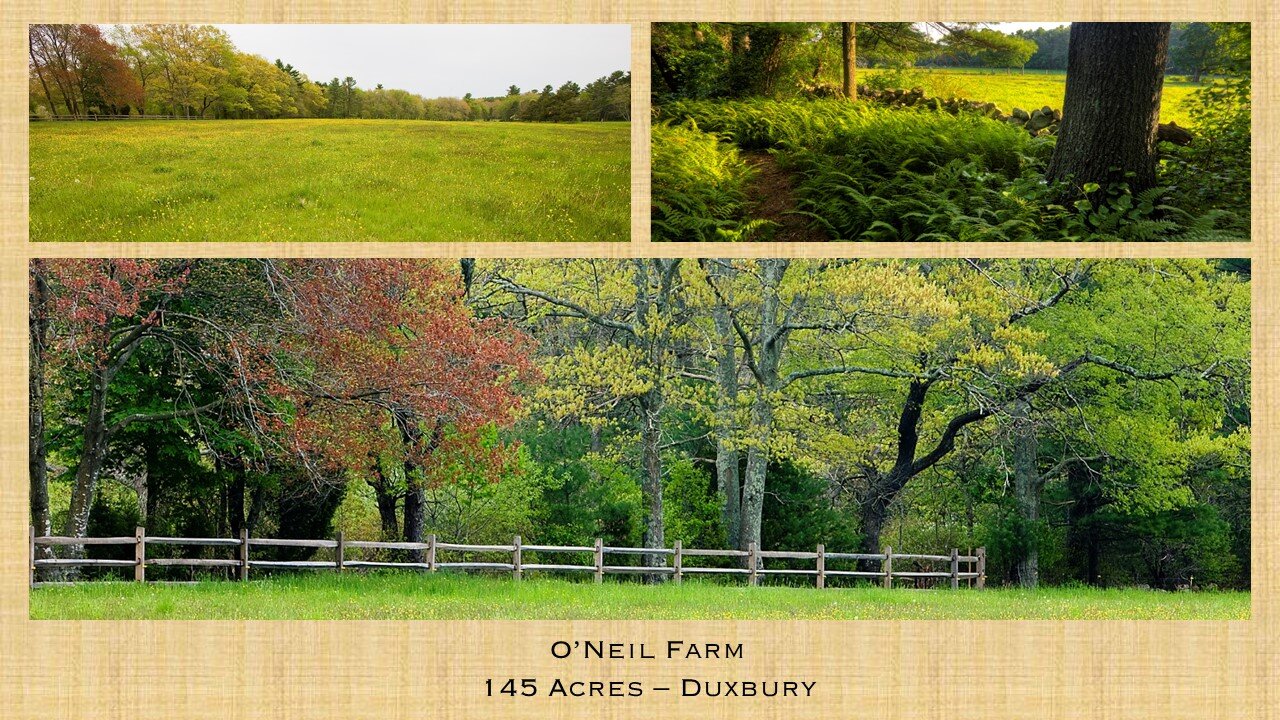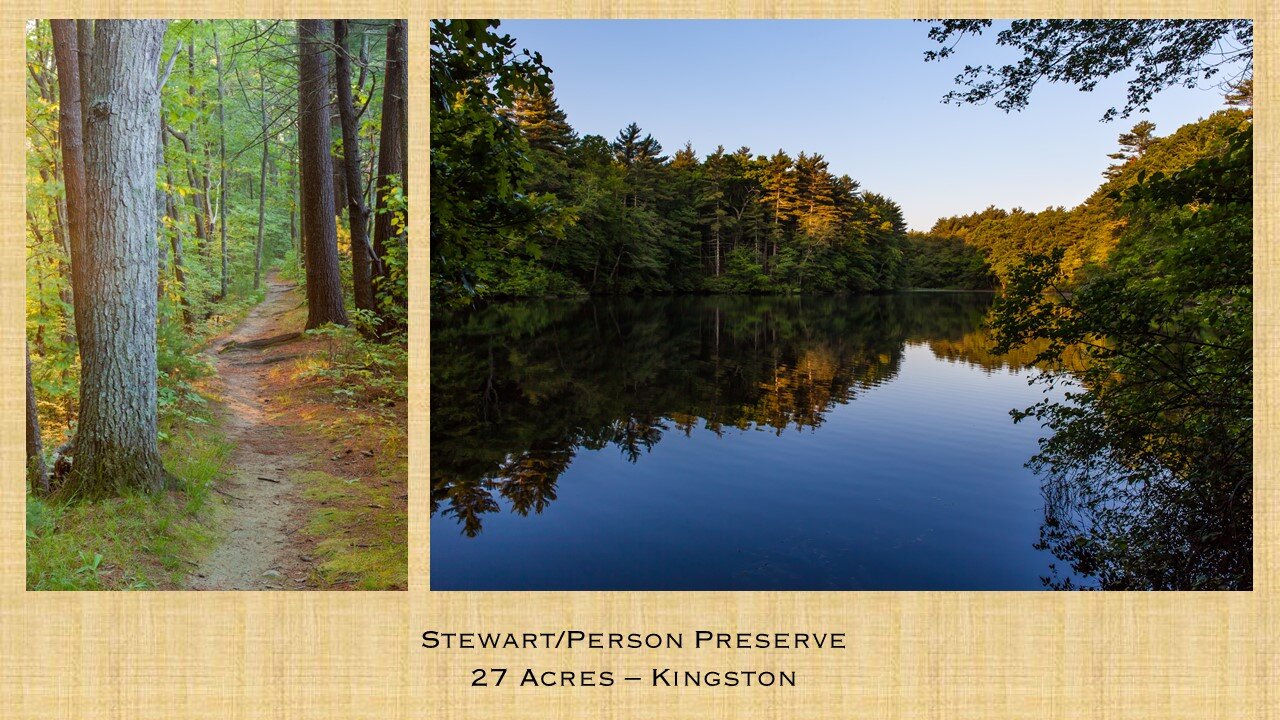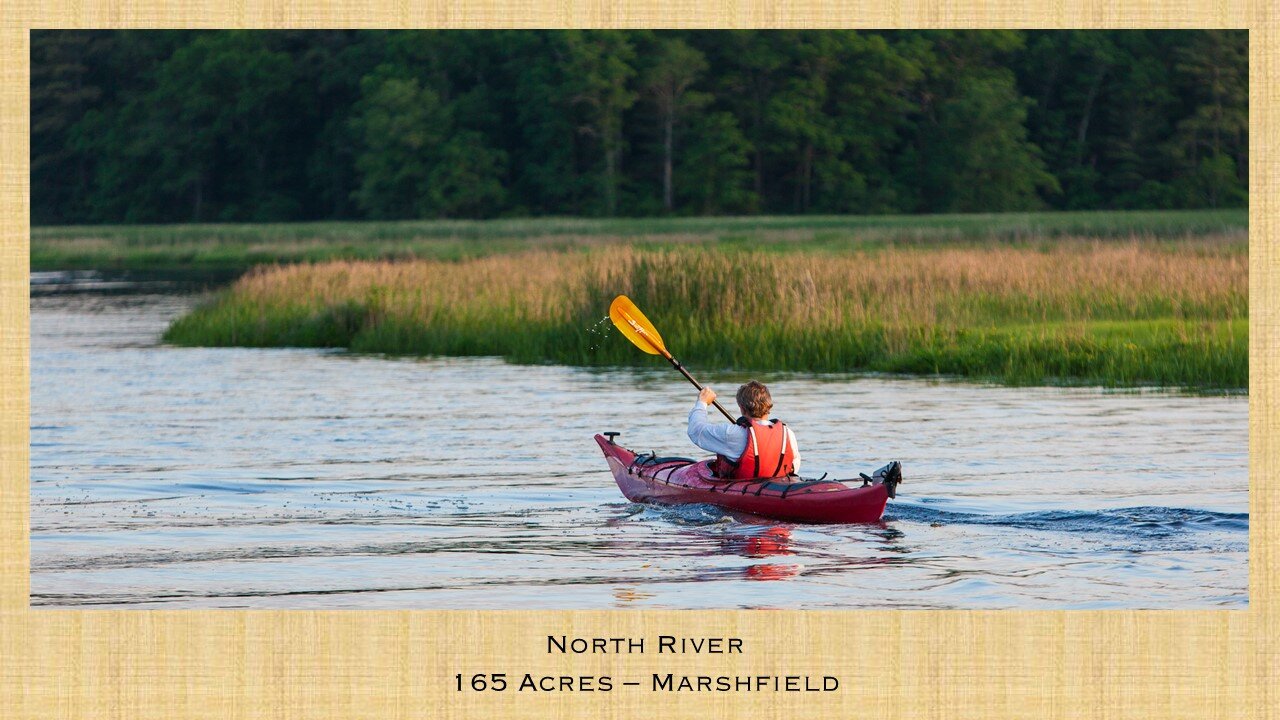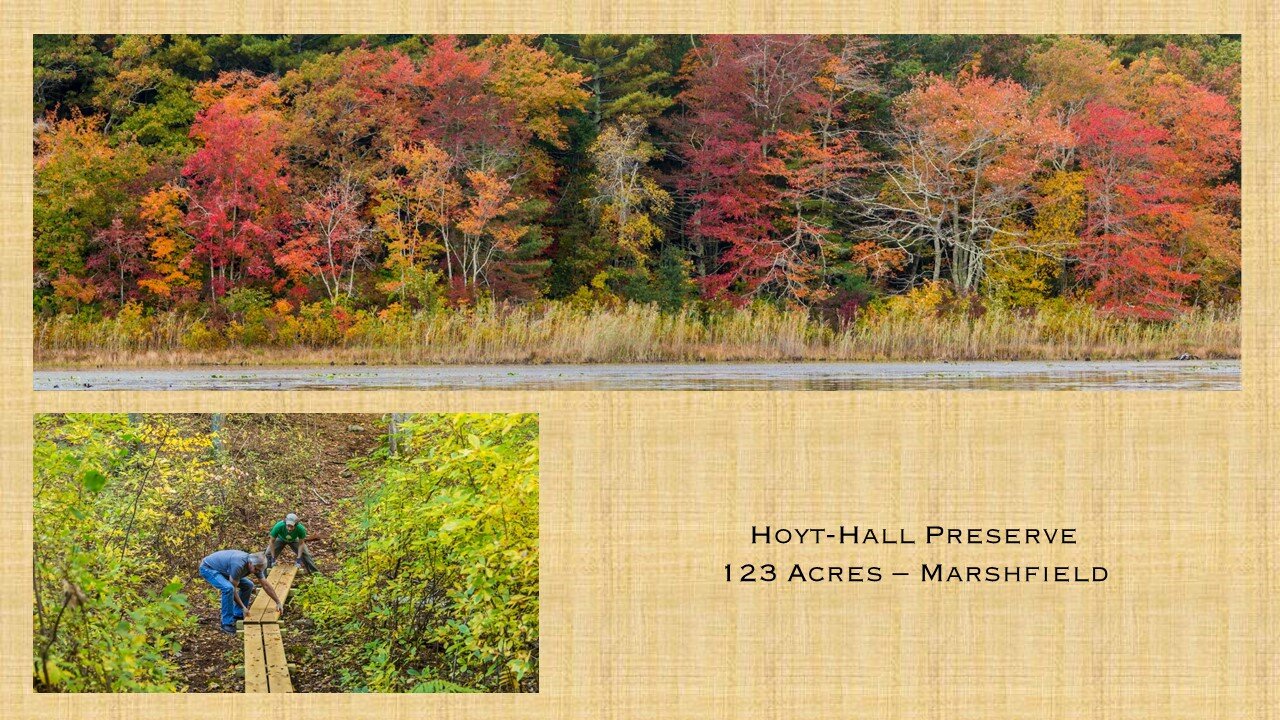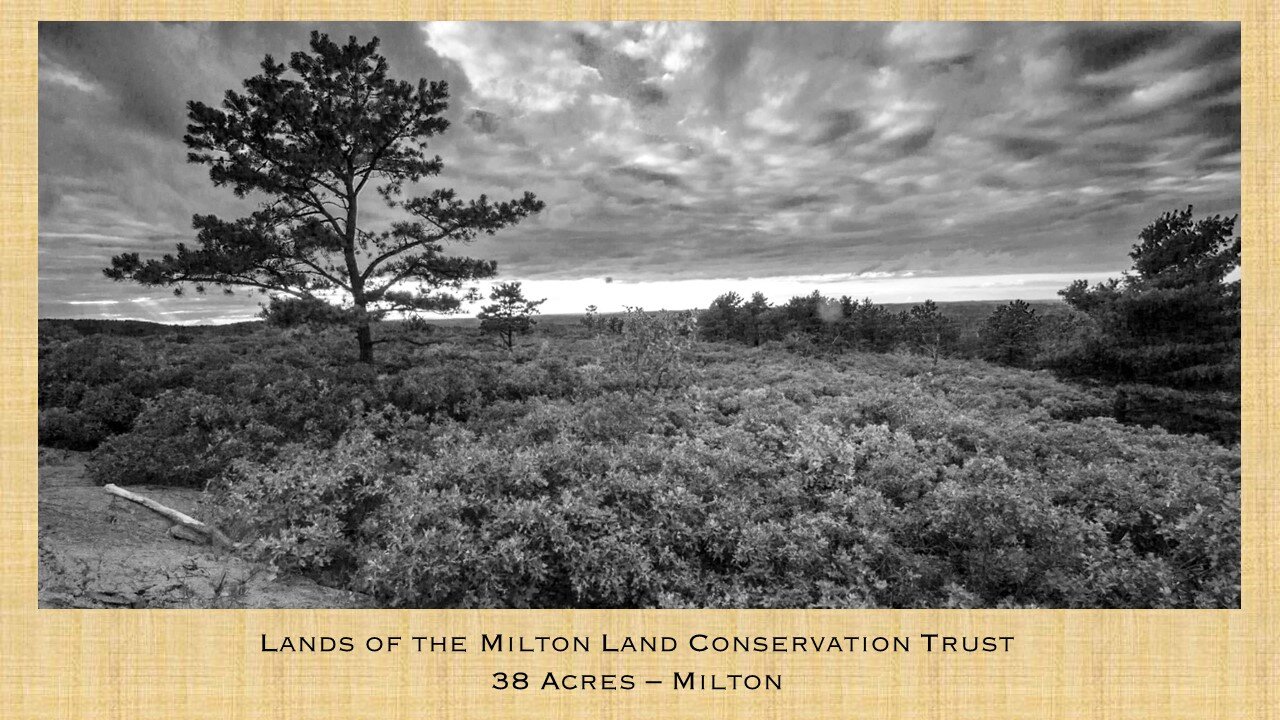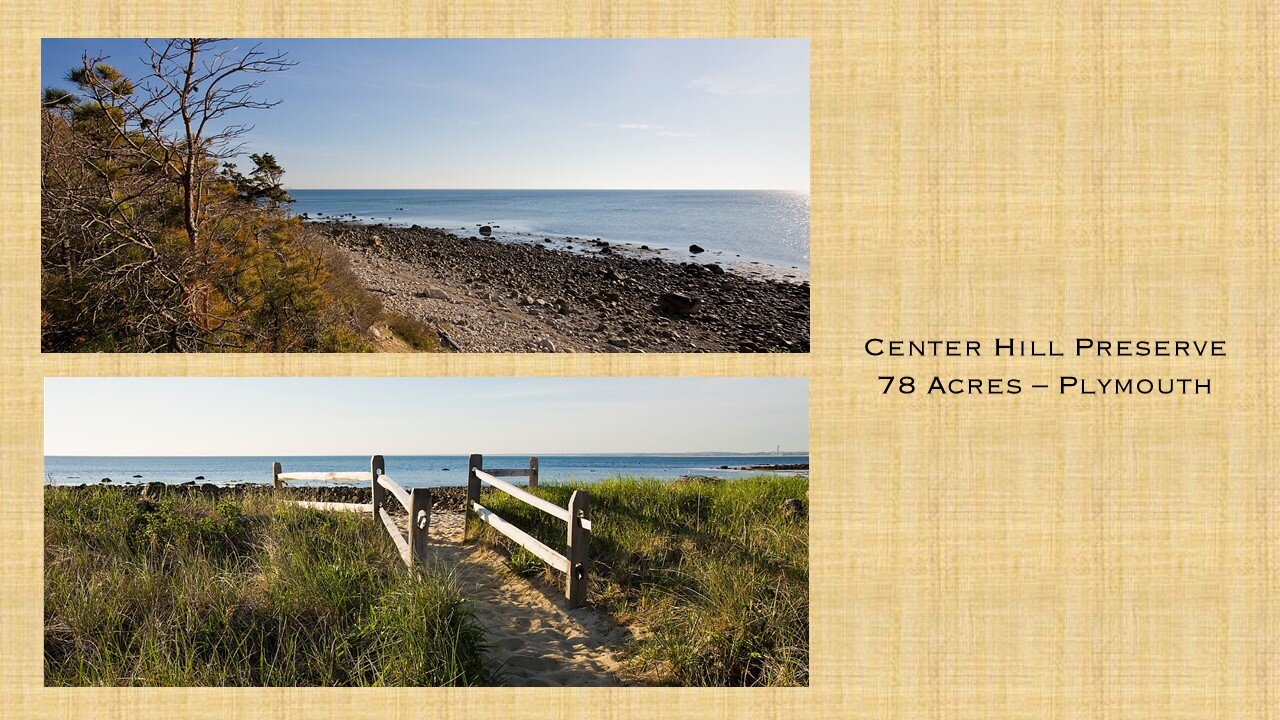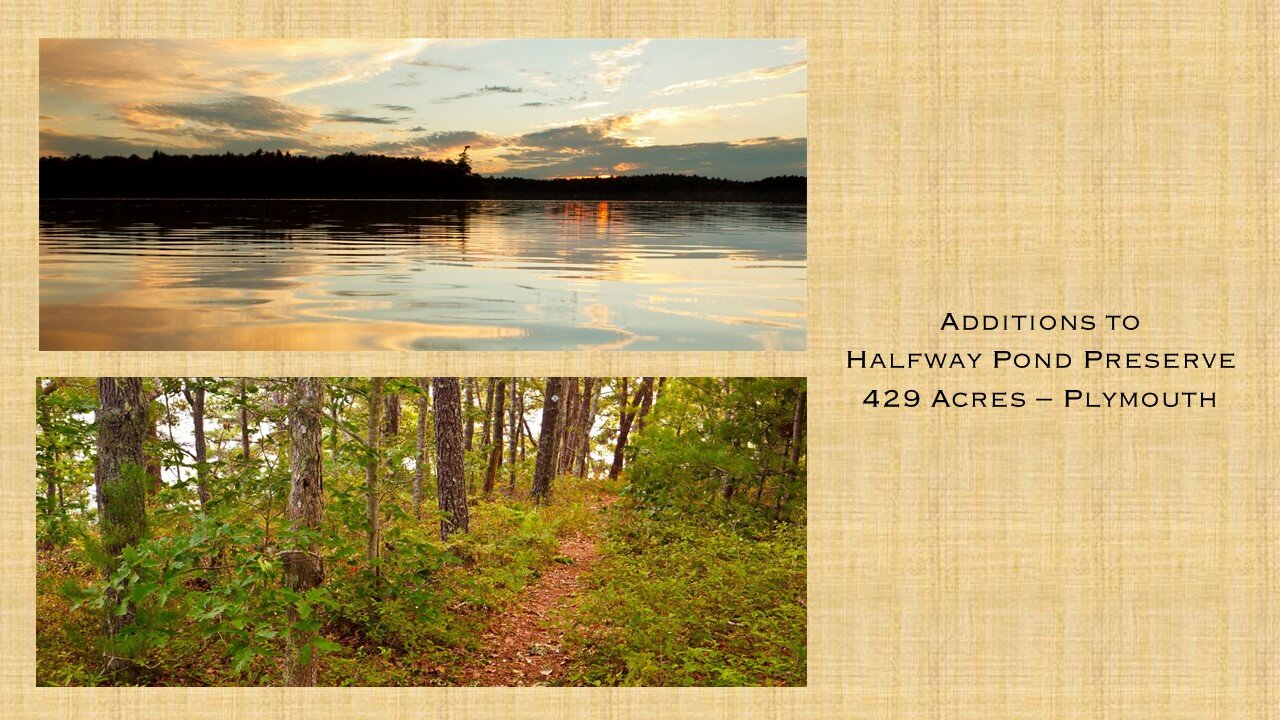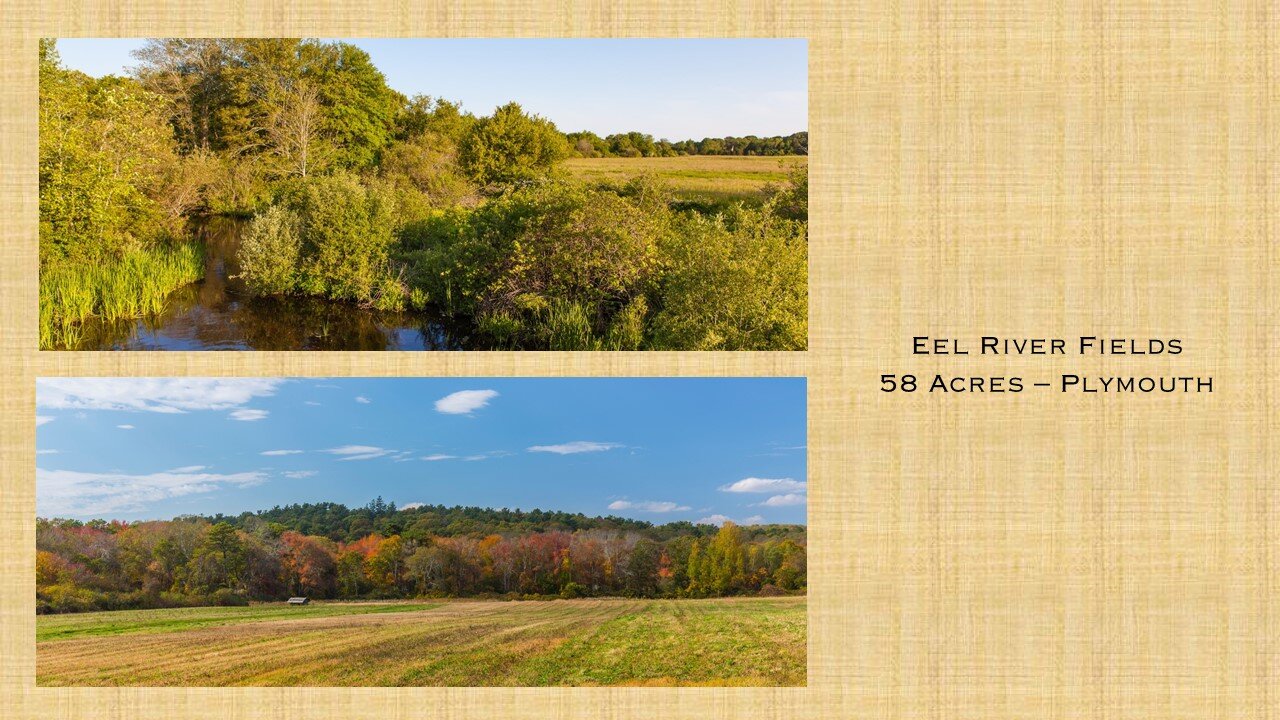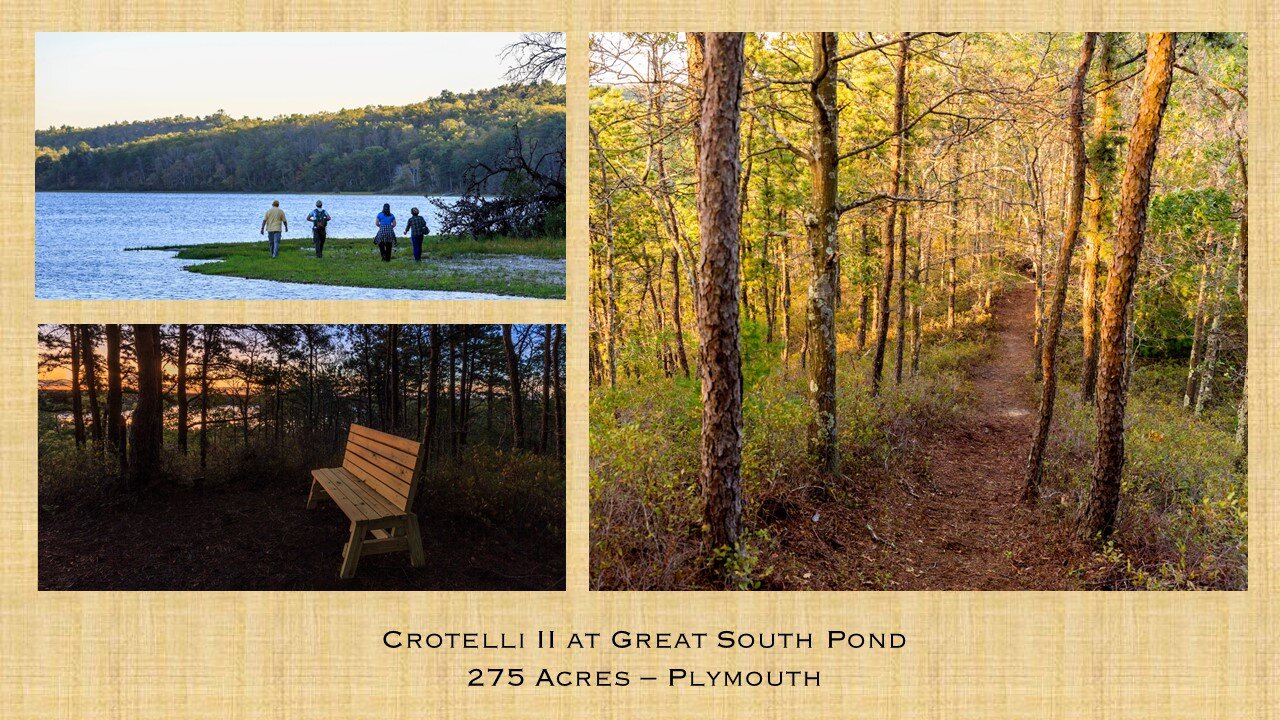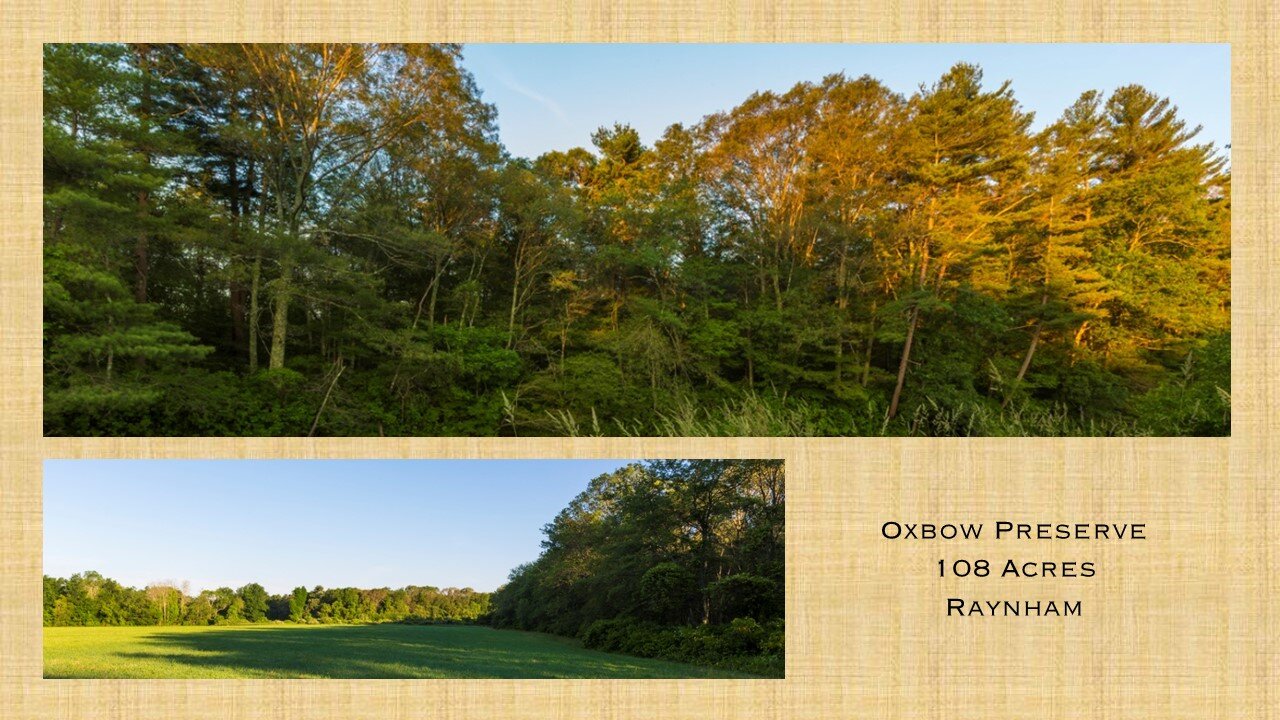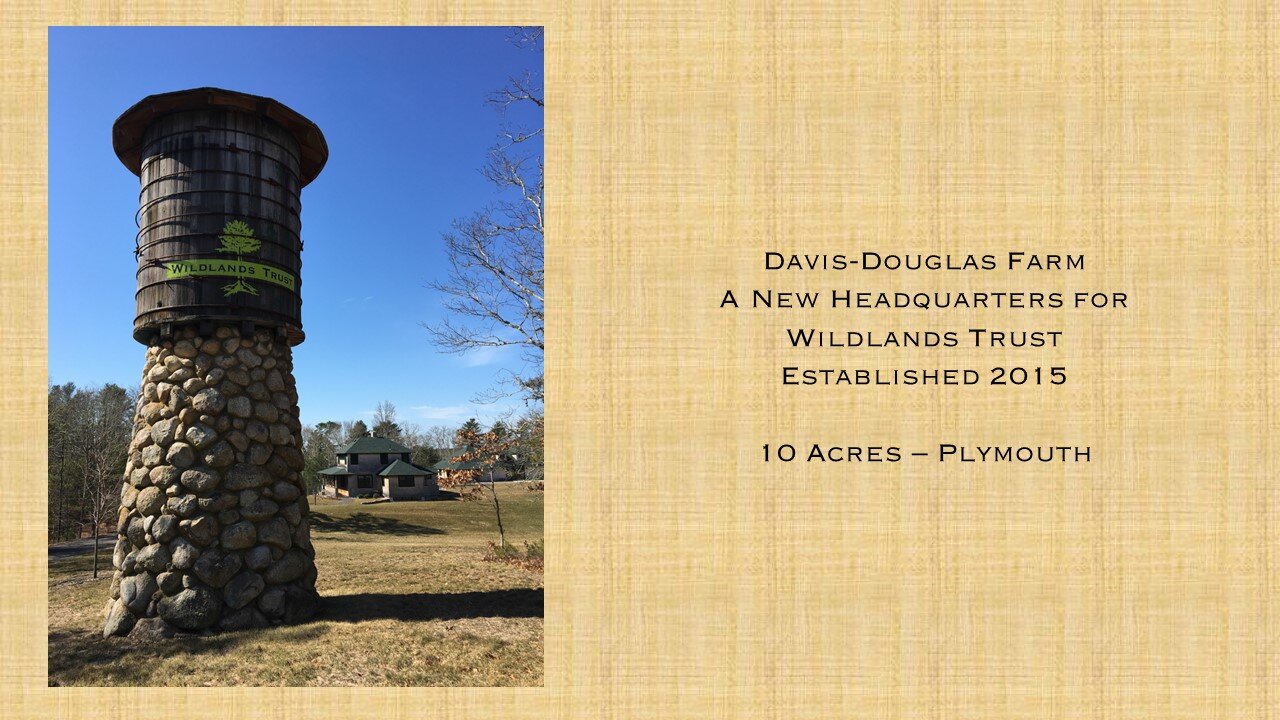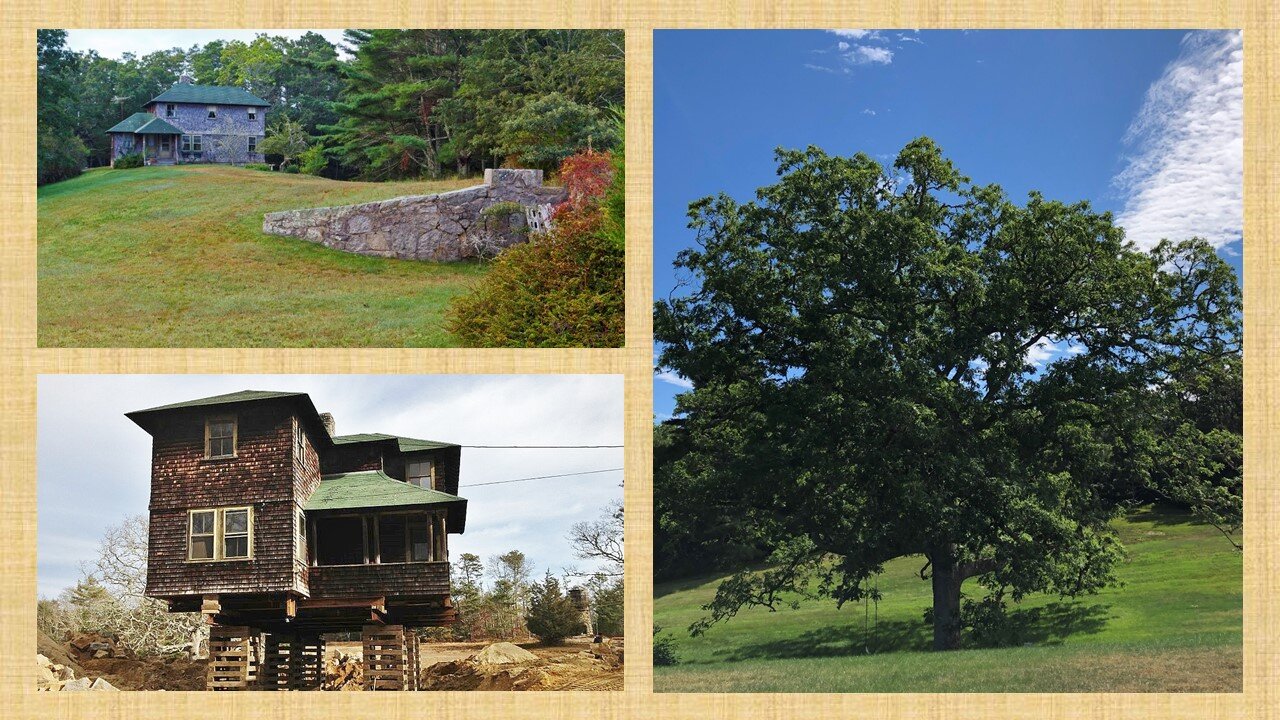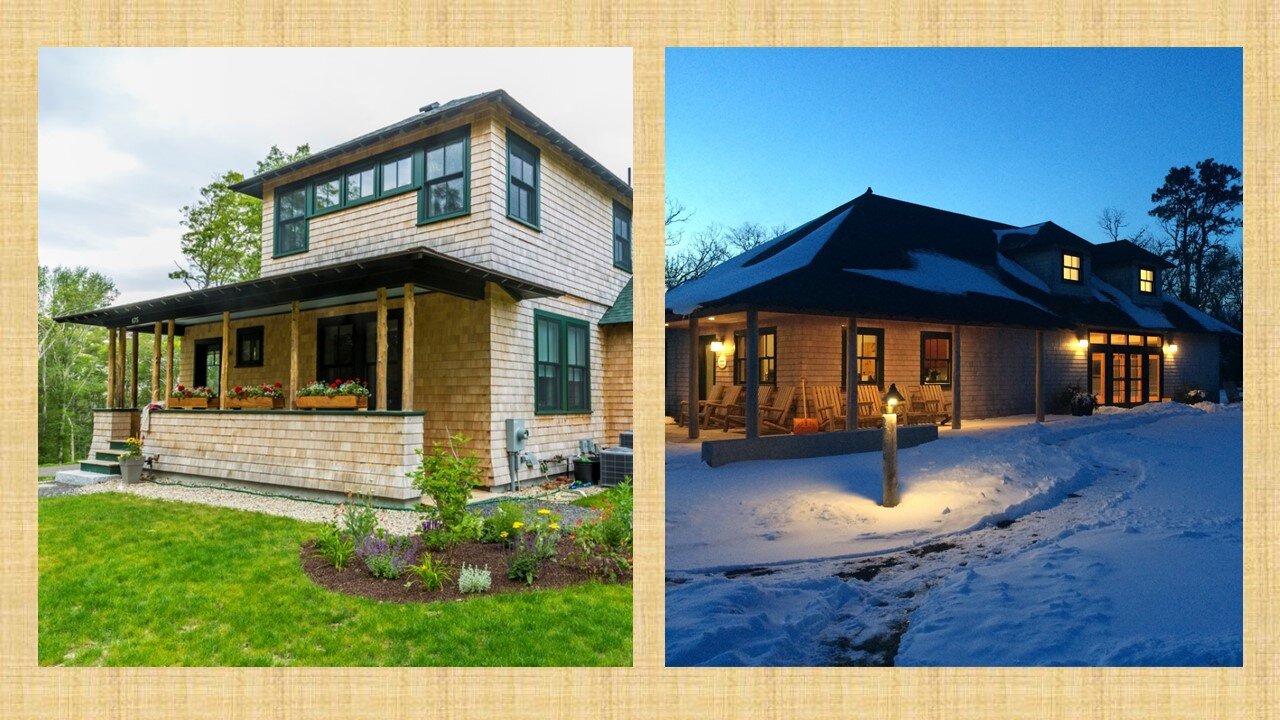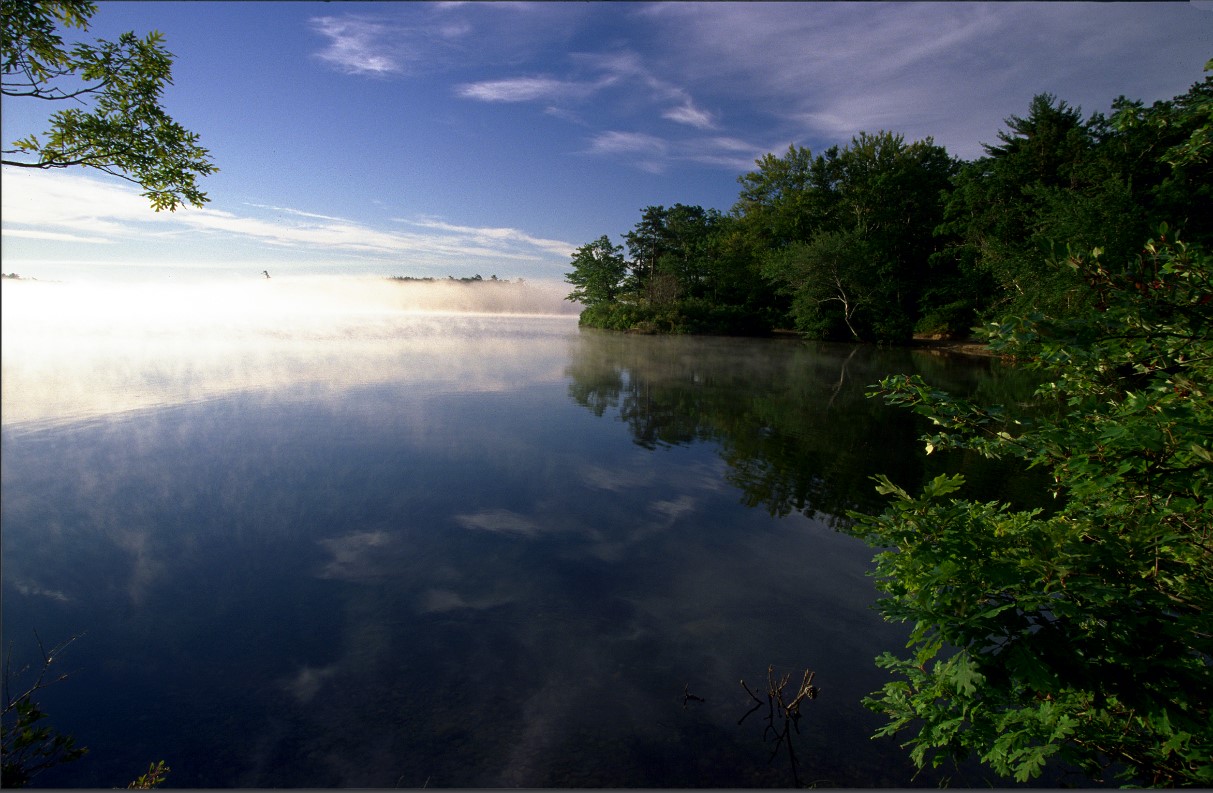Following centuries of changes along the Indian Head River, the towns of Pembroke, Hanson and Hanover work together with Wildlands Trust to improve the surrounding trail system with a MassTrails Program grant.
Wildlands Honors Doug Hart with Appointment as Chair Emeritus
By President & Executive Director, Karen Grey
Nonprofits rely on volunteer board members who donate time and expertise to help advance mission based work. It’s hard work, but with a talented, dedicated group, and an effective board leader, it can be extremely rewarding and meaningful for all involved. As the highest governing position in the organization, a board chair, with the right skills and experience, can set the stage for a successful and highly functioning organization.
Doug Hart has served with distinction as Wildlands Trust’s chairman of the board since 2007. Always leading with personal integrity and intelligence, Doug earned the confidence and respect of the board and staff early on in his tenure. His thoughtful approach, dedication, and ability to show all involved how to “do the right thing, not the easy thing,” inspired this most recent chapter of Wildlands’ journey. Under Doug’s leadership, the journey has led to a new home at Davis-Douglas Farm, endowment growth of 400%, unprecedented membership and donor growth, doubling of the staff, and 6,000 new acres of protected land in Southeastern Massachusetts.
When Doug ran a meeting, everyone had a voice, everyone was respected, and you could count on being out the door by 9:00 p.m. When I called him on the phone for advice (which was frequently), he offered his insights and guidance without ever telling me what to do. He would listen to me carefully and then say “You know, why don’t you try this…”
I thank Doug Hart from the bottom of my heart for all he has done for Wildlands Trust and for what he has taught me over the last 12 years. I am honored to call him the best boss I’ve ever had and we are all proud to call him our Chair Emeritus.
On Saturday, November 2, 2019, we honored Doug at Wildlands’ annual Chairman’s Council Supper. Thank you to all those who attended for making this year’s gathering extra special for us and for Doug.
Browse the photos below to see the lands Wildlands has protected under Doug’s leadership:
Wildlands' Commitment to Green Infrastructure
By Community Stewardship Program Coordinator, Conor Michaud
Massachusetts is the 15th most populated state in the nation and as growth trends continue, the communities within the Commonwealth face increasing environmental concerns, intensified by the burgeoning state. Climate change has recently catalyzed some of the most creative solutions to population growth and fading grey infrastructure. As Massachusetts grows, particularly in the Boston metro area, concerns around stormwater runoff, rising temperatures, and compromised air quality in urban landscapes will need to be addressed through innovation and community commitment.
For nearly half a century, Wildlands has been helping to stave off the local effects of climate change through the implementation and conservation of green infrastructure (GI). The Environmental Protection Agency defines GI as “…a cost-effective, resilient approach to managing wet weather impacts that provides many community benefits…green infrastructure reduces and treats stormwater at its source while delivering environmental, social, and economic benefits.”[1] GI is not a new idea but it has become an essential lens in which urban redevelopment is viewed.
Using the GI lens, impermeable surfaces are redesigned to allow for water passage and stormwater filtration. Street trees and rain gardens are some examples of nature-inspired adaptations which not only facilitate storm water management but help to purify the air, cool our cities, and benefit urban agriculture, all while playing an important role in the mental and physical health of city residents.
Conservation of open space is one of the most significant types of GI. Land conservation in proximity to urban areas greatly reduces localized climate effects while providing city residents with essential exposure to the natural world. Since 1973 Wildland has been working to protect Massachusetts’ natural spaces and promote open space as an opportunity to connect with nature. Helping to sustain the health of Southeastern Massachusetts has long been Wildlands’ mission and within the last ten years, Wildlands has been able to bring its expertise to the city of Brockton.
Wildlands acquired the Brockton Audubon Preserve in 2012 and began working with the city to reestablish the adjacent Stone Farm Conservation Area over the last two years. Together, these preserves comprise over 200 acres of protected woodland and wetland habitat, which help to regulate temperatures in surrounding neighborhoods, filter stormwater runoff, and sequester carbon. All of this occurring only 3 miles from the city center.
Like other Gateway Cities, Brockton is in the midst of redeveloping a formerly robust urban landscape to promote economic growth while creating a safe and attractive home for its residents. A city’s vitality, especially in consideration of a growing population, is now critically linked to GI. In an urban landscape where there is often limited space, making land conservation near impossible, other solutions must be thought of.
Over the last two years Wildlands has partnered with Brockton and the Department of Conservation and Recreation to increase the urban tree canopy through the Greening the Gateway Cities Program (GGCP). Through this free tree program the partnership will help to decrease the heating and cooling demand on residential properties while raising the real-estate value within these neighborhoods. Numerous other cities across the nation have implemented similar tree programs to effectively reduce the impacts of climate change while empowering their communities through increased property values and the natural beautification of trees.
The GI revolution affects society in a number of ways aside from the environmental and health benefits. The economic impact goes beyond saving on energy costs; the widespread implementation of GI is now beginning to have an effect on the local workforce and the future of the job market. With an increase in the urban tree canopy comes an increased demand for skilled labor and urban foresters. Investing in GI will require an investment in the green technology workforce and the citizens who inhabit these rapidly redeveloping cities. Organizations are already beginning to see this trend and are developing training and internship programs to provide new skills for those interested in joining the field.
Massachusetts Clean Energy Center (MACEC), for example, helps match aspiring clean energy employees with green technology companies within the Commonwealth. Organizations like MACEC are helping to keep the Massachusetts workforce in place by providing potential employees with an opportunity to expand their skill set while working for a cause that will sustain their community. While green job training and environmental education is becoming more prevalent there are some organizations taking the green technology and GI workforce one step further.
The Nature Conservancy (TNC) is pushing the boundary on innovation and commitment to a sustainable future with the development of the Sustainability Accelerator. The accelerator is designed to fast track green innovations by providing a space for incubation and connecting entrepreneurs with potential funding sources. Efforts to sustain the GI and green technology revolution are essential to preserving our cities and providing a home for future generations. Equally important, is working with the communities most impacted by climate change to discuss and implement GI and discover opportunities for career advancement and workplace innovation.
While groups like TNC and MACEC are working directly with the work force, Wildlands is taking a different approach to the redesign of our urban landscapes, focusing on environmental education and public exposure to natural spaces. The long established partnership with Brockton High School has allowed Wildlands to aid in student’s education and demonstrate the possibilities for environmental and community based work through Envirothon. Community outreach in the Greening the Gateway Cities Program goes beyond helping put trees in the ground; weekly one-on-one canvassing interactions with Brockton residents are opportunities to discuss the importance of GI and ask each resident to take a step forward in helping to protect their environment.
The goal of developing healthy and environmentally conscious communities across Massachusetts is not lofty. Wildlands realizes that these efforts must start from the ground up through land conservation, community outreach, and environmental education. The commitment to the protection of open space in perpetuity is a commitment to the communities within these spaces and a commitment to help build a more healthy and equitable planet.
The Scoop on Dog Poop (and Other Trail Etiquette Tips)
By Roxey Lay, Membership & Communications Coordinator
*Editor’s note: In 2020, Wildlands Trust adopted a “leash rule,” requiring dogs to be on leash (leash in hand) at all times on Wildlands property, regardless of towns’ policies about pet control. Read on for more valuable information about dog safety and etiquette on trails.*
With temperatures rising, people from all over the region are getting back out onto the trails. Having access to open public lands is one of the great qualities of living in Southeastern Massachusetts and it’s up to all of us who use these lands to follow appropriate dog etiquette when visiting with four-legged companions. So, before you hit the trails this year, we want to give a refresher on some quick dog etiquette tips for your next visit.
Your dog pooping on the trails may not seem like it’s a big deal, but it is. Everyone knows not to leave trash on the trail, however, it’s just as important to pick up your dog’s poop, carry it out with you and dispose of it properly. One of the primary reasons is that it can spread disease. “People think it’s fine [to leave it] because it’s natural, but it’s not [fine],” says Stewardship Manager Erik Boyer. “If you’re a dog owner, it should be a concern for your own dog’s safety, as well as for others on the trail.” Animals, including your dog, do occasionally eat other animal’s waste and if they happen to come across some that contains harmful bacteria and/or parasites, it can make them sick. This also applies to humans, who may come in contact with it or unintentionally consume contaminated soil or water. When your dog’s poop breaks down, it may be physically gone but the bacteria remains in the soil or water it has washed into. If you get contaminated soil on your hands and then happen to get it in your mouth or drink contaminated water, it can make you sick too.
Beyond the bacteria, the nutrients found inside your dog’s poop can negatively affect the surrounding ecosystem. Wild animals that live on our preserves eat resources and nutrients from that ecosystem and then return those same nutrients to the area. The nutrient-rich dog food your dog eats, however, results “in poop that’s very rich in substances like nitrogen and phosphorous—the same ingredients you’ll find in fertilizer. The addition of that nutrient-rich poop to an ecosystem leads to an imbalance that, when it’s washed into water sources, can lead to algae blooms and promote the growth of invasive plant species on land.” [1] Nearly every Wildlands preserve has either a wetland or body of water, which eventually connects to the ocean and can affect other areas on the way. For example, 17 different streams connect to the Taunton River and run through 3 counties and 12 cities, populated with 1.7 million people, before emptying into the Atlantic Ocean in Wareham. Contaminating a body of water, no matter how small, can have a larger impact than you may realize.
Bagging it up and leaving it on the ground (or hanging it in a tree) isn’t a good idea either. Now, instead of only your dog’s poop decomposing on the trail, you’ve introduced plastic into the equation. The bag will take years to breakdown and when it eventually does, microplastics, along with the bacteria from the poop, will remain in the soil (or wash into a waterway). The presence of your dog’s waste can also alert prey species to the existence of possible predators, putting undue stress on wildlife that live in that area.
It’s also just plain unsightly. Public preserves are for everyone and no one wants to see dog poop bags littering the trail. “Part of what we do is teach good land ethics and picking up after your dog sets a good example for other trail goers and younger generations,” says Community Stewardship Program Coordinator Conor Michaud. So, if you are out on the trail with your dog this summer, please remember to bring dog waste bags with you and dispose of it appropriately.
Now that we’ve gotten that out of the way, here are some additional tips for dog etiquette on the trails:
Know the Town Leash Law:
On any Wildlands property, visitor guidelines require dogs to be under control at all times in order to protect sensitive wildlife and respect other visitors. Prior to your visit, you should familiarize yourself with the leash laws where the preserve is located so you can comply with that town’s definition of “control”. These laws can vary town to town and can range from requiring a leash at all times (sometimes with leash length maximums) to allowing voice command control. In areas that allow voice command, assess your dog’s level of obedience and determine whether or not that is the best option for them or if it’s better, for your dog’s and other visitor’s safety, for them to be on a leash.
Yield Trail Right-of-Way:
When on a trail, if you have a dog and you happen upon another visitor, you should yield the right-of-way to the other visitor. This means stopping and moving to the side of the trail with your pup. If you are in a town that allows voice command control and your dog is not on a leash, you should leash the dog when moving to the side of the trail until the other visitor has passed. You may know your dog is friendly, but others don’t and may not be comfortable with your dog approaching them.
Reflective Gear:
Hunting on Wildlands properties is prohibited unless otherwise posted; however, we do suggest visitors (and their dogs) wear brightly colored or reflective clothing during hunting seasons. Some Wildlands properties share borders with or have trails that cut through other town/organization-owned properties that may allow hunting and it is always a good idea to make sure you and your animal are visible to hunters.
Stay on the Trail:
When visiting any Wildlands property, please respect the wildlife and vegetation around you and stay on the trail. Please don’t let your dog run into the woods as it may disturb local wildlife and destroy sensitive vegetation.
Getting out on the trails is a healthy and fun way for you and your dog to spend your days and we thank you for taking the time to be courteous to both our properties and other visitors!
Land Projects Heat Up as the Weather Cools Down
By Scott MacFaden, Director of Land Protection
Often a productive time of year for land preservation projects, this November proved particularly so for Wildlands. We completed a purchase in Plymouth and a land donation in Halifax that expanded two of our largest preserves, Halfway Pond Conservation Area and Striar Conservancy.
In Scituate and Plymouth, partnership projects reached a critical juncture and a closing, respectively. In Scituate, town meeting voters approved the purchase of MacDonald Farm, a beloved local landmark on 1st Cliff, and the town of Plymouth purchased an 88-acre property that includes one of the town’s highest-elevation landforms, the striking Hio Hill.
Early morning mist at Halfway Pond.
Halfway Pond Conservation Area Addition | Plymouth
A few days before Thanksgiving, Wildlands completed the purchase of an 11.4-acre parcel on Halfway Pond in Plymouth from the Waltham-based Advaita Meditation Center. This acquisition complements recent acquisitions we have made over the past several years near Halfway Pond and further expands Halfway Pond Conservation Area, one of our oldest, largest, and most beloved preserves.
A rectangular-shaped parcel with varying topography, this property is primarily wooded upland and includes over 470 feet of frontage on Halfway Pond. It is integral to our ongoing effort to pursue ecological restoration efforts along the pond’s shore that will allow for the revegetation of native species. Wildlands now owns almost all of Halfway Pond’s western shoreline.
A generous private donor supplied all of the funding for this acquisition. Wildlands is fortunate to enjoy the support of such donors who share our belief in the importance, indeed the imperative, of preserving our region’s natural heritage.
A snowy owl at rest at MacDonald Farm.
Photo courtesy of Jim Petit.
MacDonald Farm | Scituate
On November 14, voters at Scituate’s special town meeting voted to approve the town’s purchase of MacDonald Farm, the last remaining undeveloped parcel on 1st Cliff and one of the few remaining along the town’s 21-mile coastline.
MacDonald Farm includes 600 feet of frontage on Scituate Harbor, abuts other open space parcels and NOAA’s Stellwagen Bank National Marine Sanctuary headquarters, and is a significant component of the vista from multiple vantage points in Scituate Harbor. In decades past, saltmarsh hay and Irish moss were harvested from its shores.
The town will use Community Preservation Act (CPA) funds to acquire the property and, in keeping with CPA requirements, will grant a Conservation Restriction on the property to Wildlands following the closing.
MacDonald Farm has been a long-time preservation priority for local stakeholders, including 1st Cliff resident and abutter Mary Jenkins, and NOAA. Mary co-sponsored the application we submitted to the Scituate Community Preservation Committee last summer and was integral to the process of advancing the application through the review and approval process that culminated in the town meeting vote. NOAA representatives, Ben Haskell and Anne-Marie Runfola, provided invaluable support throughout that review and approval process. Wildlands is pleased to have had the opportunity to join the project in its latter stages and collaborate with these local stakeholders, town officials, and volunteers toward advancing the preservation effort.
Hio Hill Preserve | Plymouth
On November 29, the town of Plymouth acquired 88 acres off the east side of Old Sandwich Road in southeast Plymouth. The town used $1.1 Million in CPA open space funds and a $50,000 contribution from Wildlands to purchase the property, also known as Hio Hill Preserve. We were able to provide this critical complementary funding courtesy of a generous private donor.
Hio Hill Preserve is entirely wooded upland, with notably diverse topography. Its most prominent feature is its namesake hill, one of the highest elevation landforms in all of Plymouth. Hio Hill’s broad summit plateau offers views of Cape Cod Bay as well as much of the surrounding landscape. It directly abuts other open space parcels, including town-held land, and sits just across Old Sandwich Road from a 450-acre open space assemblage comprising multiple town open space parcels and our Richard F. Wynn Preserve. It is partially within a Zone II wellhead protection area and helps protect a town drinking water well situated three-fifths of a mile to the southeast.
Wildlands will hold a CPA Conservation Restriction on this outstanding new addition to the town’s portfolio of municipally-owned conservation land.
Along the Winnetuxet River in Halifax.
Striar Conservancy Addition | Halifax
Courtesy of the Stevens family, the last of our November projects included the donation of a 3.6-acre parcel along the lower Winnetuxet River in Halifax. Comprising primarily riparian wetlands, the parcel directly abuts and expands Striar Conservancy, our largest preserve in Halifax, and sits across the Winnetuxet’s expansive floodplain from the town of Halifax’s Randall-Hilliard Preserve, upon which Wildlands holds a Conservation Restriction.
Clyde and Gladys Stevens acquired the property in 1963. With the 2015 passing of Gladys Stevens, the property descended to her heirs, Ernest Stevens and Jeanne (Stevens) Wilson Baum, who graciously donated the parcel to Wildlands. We thank Mr. Stevens and Ms. Baum for their donation of this important component of the Winnetuxet River corridor.


